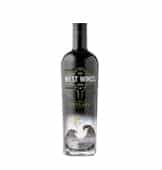June 28, 2024 7:07 pm
PART 1 INTRODUCTION OF GIN STYLES
(Society Salamanca, Hobart, over 60 Australian Gins)
There are London Dry Gins, Australian Botanical Gins, Old Tom Gins and so many more. But “a Gin by any other name will taste…..like Gin”. Right? Wrong!
Gin could simply be described as vodka with plant flavours (botanicals) added, which must include juniper characteristics. So, take a neutral (unflavoured) spirit and incorporatesuch botanicals by experimenting and a recipe that pleases. Oh, if only it were that simple! It can take weeks, months and even years to achieve exactly what the distiller is looking for.
Most people have heard of “London Dry Gin” –but different London Dry Gins can taste very different. There are lots of types and styles out there and one of the challenges with defining them is that most of the style names don’t define the taste.
With wine, if you buy a chardonnay you can expect a similar flavour profile. Similarly, for shiraz. If it is a Yarra Valley Chardonnay, the flavour profiles are even closer to each other. Gin is harder to pin down. There is no Tasmanian Gin style.London Dry is defined by the way it is made, Navy Strength by the level of alcohol, Old Tom has sweetness, Barrel Aged because it is aged in a barrel, which at least gives a little away.
London Dry Gin
I cannot write about Gin without starting with London Dry. Firstly,the term “dry” basically means “not sweet”, as used in the wine industry. Now is London Dry Gin a style? They don’t have to come from London, they can taste very different from one another and in drinking them, few would know whether it was or was not a London Dry Gin. Make sense? London Dry Gin is about being made a certain way, based on Gin history. It is actually legally defined. Do Gin drinkers really care about how it is made? Pipe down and just give me another Negroni.
Thus, many Gin drinkers associate a certain flavour profile to “London Dry” (strongly juniper, with citrus and some root base, like liquorice or angelica). The world’s most popular Ginsare all London Dry: #1 Gordons, #2 Bombay Sapphire, #3 Tanqueray and #4 Beefeater. Ask for a G&T in a bar, you’ll get a London Dry, and extremely likely one of these four. So, lots of people think the taste of London Dry is pretty much the taste of Gin, full stop.

So as mentioned previously, many Australian Craft Distillers use the London Dry production method, but their Gins can taste nothing like a London Dry flavour. So, at risk of offending the big names, (as if we care), let’s forget about this style completely. Besides, any decent Aussie is not going to give a Pom an inch.
Style! What Style?
Not a great start then. The most popular Gin “style”, or at least the words used on the most popular Gins in the world, is not based on taste. London Dry on a bottle may not tell you what it will taste like. Where do we go now?
Making Gin is part alchemy and part artistry. Analogy time: artists paint in a style, then along comes a new painterwho paints differently. People, being people, then try to name and define the style. Sometimes people later realise someone’s been doing it before anyway, and things start to get murky. (see Hilma afKlint – abstract artist). Defining an artistic style is tough and Gin is an art.

We can use the same termsin Gin as emerging art: “New Wave” or “Contemporary” or “New Western” or “Weird Stuff”. Whatever they are called,there are a huge number of artistic distillers who arecreating new, innovative and different Gins all the time. It’s their Gin and why should anyone try to pigeon-hole them.
Innovation and change begins to occur in any area that had become boring and shouldn’t really be a surprise with respect to Gin. It is repeated over and over again in many businesses. Fashion simply changes when something gets boring or overdone. What’s more, when it happens, innovation or change can come quickly. Compare Australian Craft Gin vs big brand gin to Australian Craft Brewing vs big brand beer.
Worldwide Gin distillers are riding the “New Wave” and Australian Craft Gin distillers are right there at the crest. Some like tradition, but some are not using London Dry methods and/or staying clear of making Gins that taste like those big London Drys mentioned above. They are offering something different, experimenting, following personal taste and not following the crowd. It might be a few new botanicals from their local area, like Bog Myrtle in Scotland, Lingon Berries in Sweden or Bush Tomato in Australia.It might be a non-traditional still, different base spirit, introducing botanicals at different points and much more. Australian Craft Gin distillers are doing all this, and they do it extremely well.

In Part 2, I will examine the new and old styles listed below, at least the styles often referred to in Gin discussions.
Basic List of Gin Styles.
- Australian Dry
- Navy Strength
- New Wave / Contemporary
- Barrel Aged
- Old Tom
- Infused or Flavoured
- Genever
- Plymouth Gin
